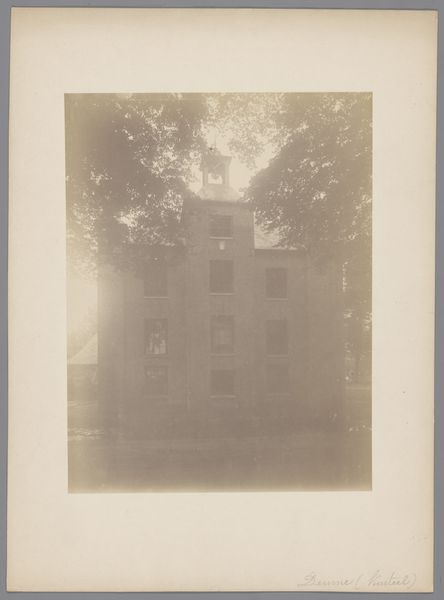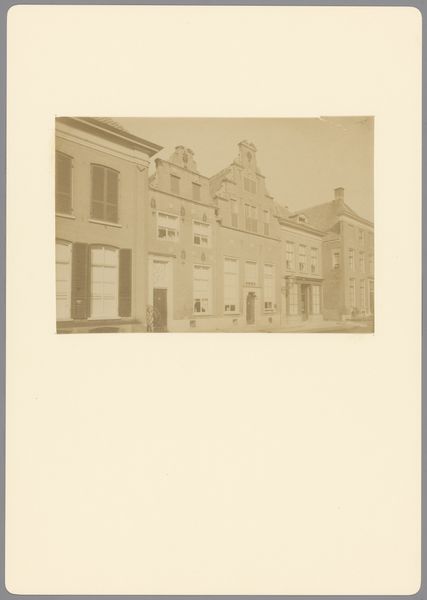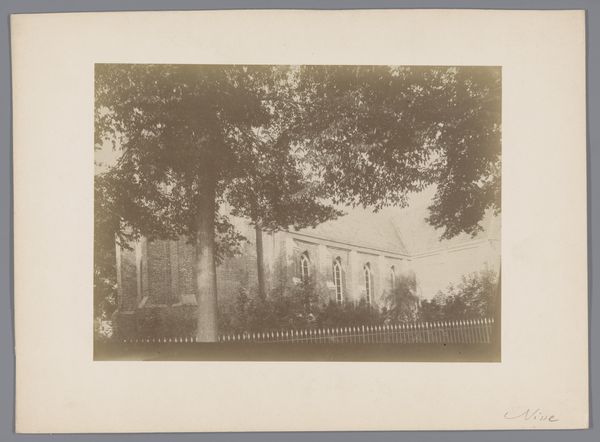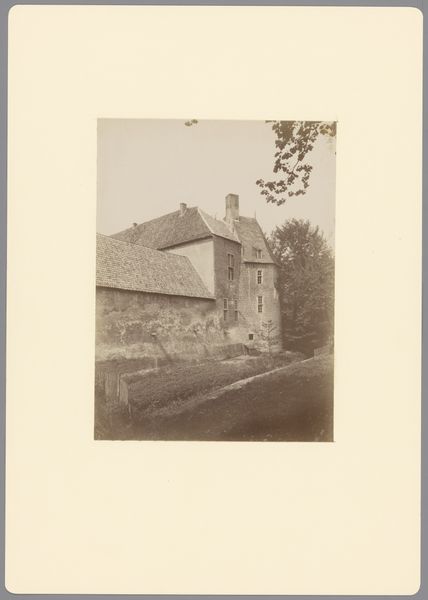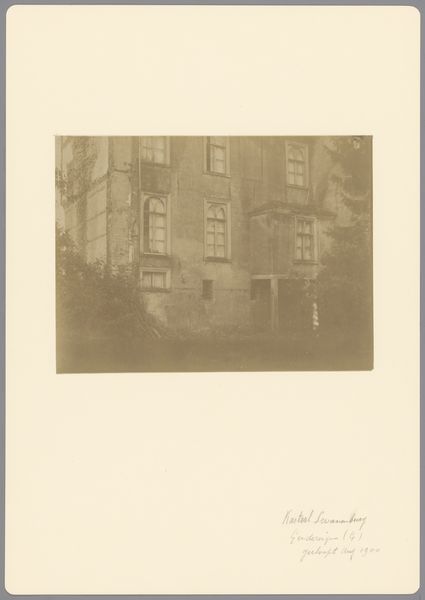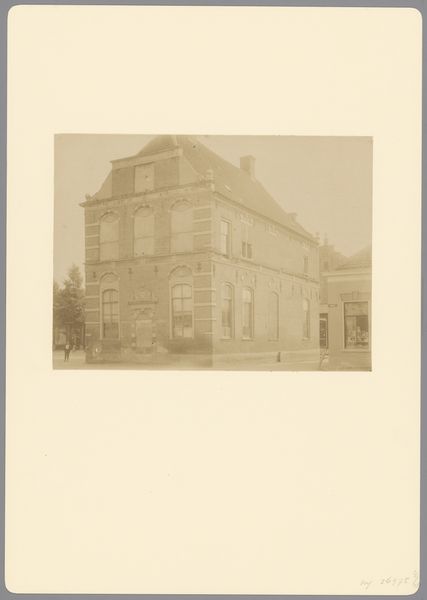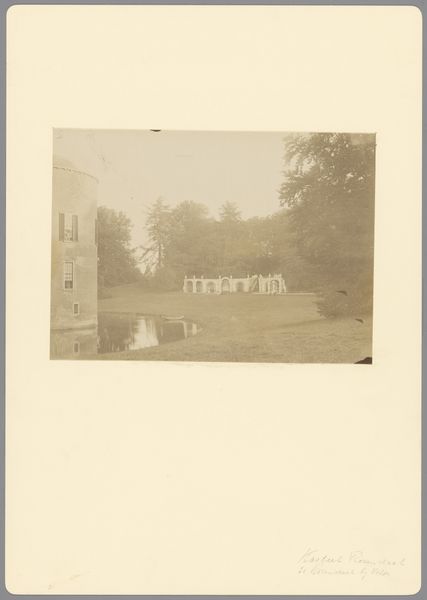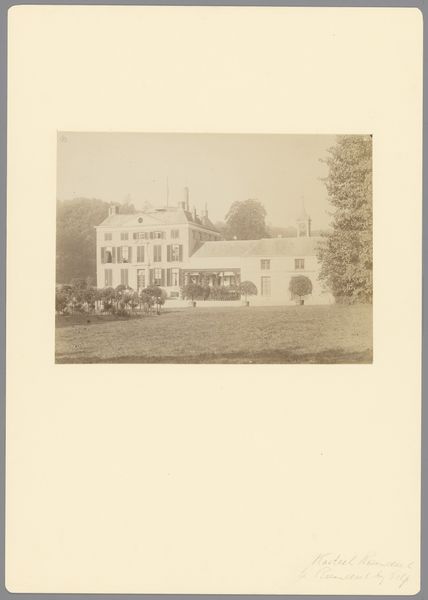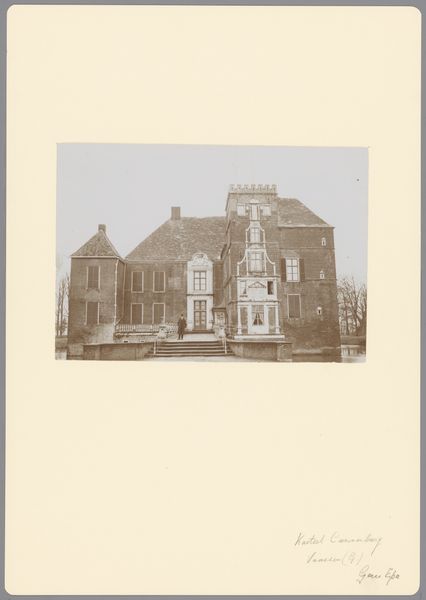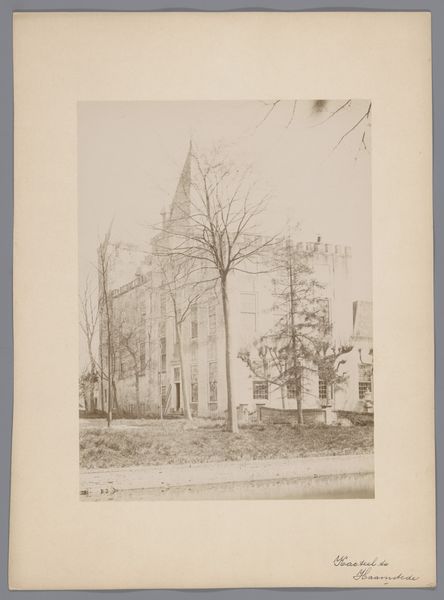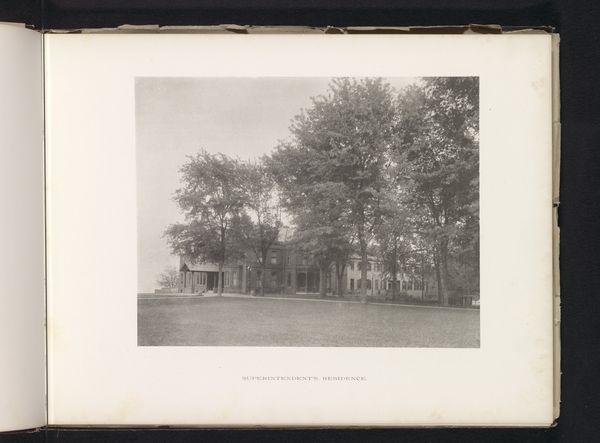
Dimensions: height 170 mm, width 227 mm
Copyright: Rijks Museum: Open Domain
Curator: This photograph is entitled "Binnenplaats van het Huis Bergh te 's Heerenberg", likely taken between 1890 and 1920, by an anonymous photographer for Monumentenzorg. What are your initial impressions? Editor: I find it quite imposing, despite its monochromatic palette. The scale of the building relative to the figure on the staircase suggests a place of considerable power, even now. There is a subtle compositional relationship between the geometry of the facade and that dome to the side of the frame. Curator: Indeed. Examining the photograph formally, notice how the photographer uses light and shadow to accentuate the architectural details, leading the eye up the staircase to the entrance. The letters carved above, G Z D S B M H, add another intriguing layer of semiotic mystery to the structure, a clear signifier, even if indecipherable today without more context. Editor: Absolutely. These public facades are critical sites. If we place this image within the context of early photographic practices and the rise of heritage preservation, it speaks volumes. The choice to capture the "Huis Bergh" in this particular way likely underscores the architectural and historical importance ascribed to the building, preserving a tangible link to the region’s socio-political past. What purpose did these buildings serve and who gets access? Curator: We might also look closely at the contrast between the clearly delineated lines of the architecture against the natural world—that small stand of trees over to the side. Are these meant as contrasts? Or continuations? Editor: Considering Monumentenzorg's role, I'd argue it served to reinforce a specific narrative—a sense of national identity rooted in architectural grandeur and tradition that elided contemporary inequalities, focusing on a constructed past. The photograph becomes a tool to showcase and arguably legitimize particular power structures. Curator: Very compelling points, all worth considering further! For me, as I come back to its composition and that lone figure by the steps, it is just really haunting, regardless of whatever historical argument is projected onto it. Editor: Well said, that tension makes it even richer—between form and ideology, history and image. This really highlights how photographs can act as historical documents and complex works of art simultaneously.
Comments
No comments
Be the first to comment and join the conversation on the ultimate creative platform.
